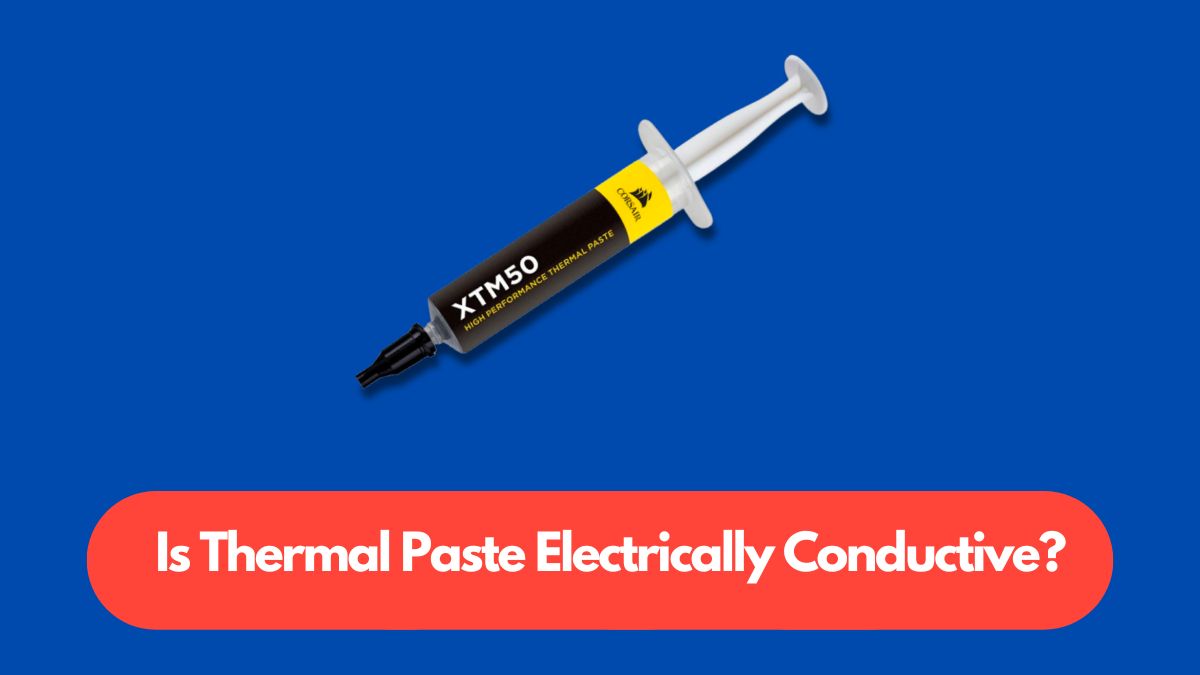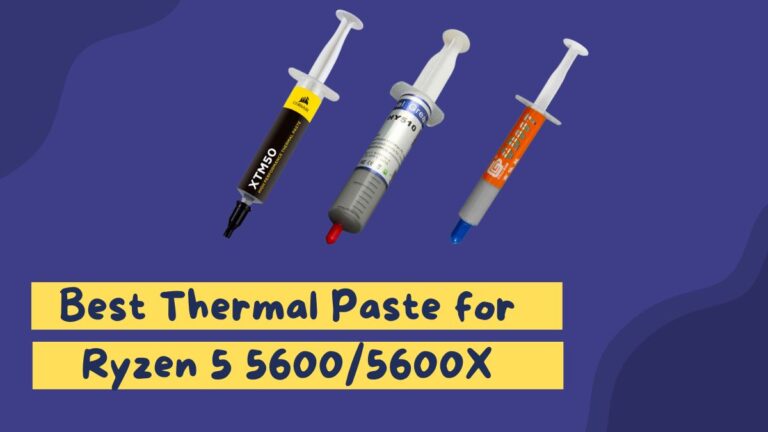Is Thermal Paste Electrically Conductive? All You Need to Know!


Are you wondering if thermal paste is electrically conductive?
Well, fear not! I’ve delved deep into the world of thermal paste to shed some light on this matter. As a self-proclaimed computer geek, I’ve tested, researched, and tinkered with countless CPUs, GPUs, and cooling solutions. In this blog post, I’ll unravel the mysteries surrounding thermal paste conductivity, debunk common misconceptions, and arm you with the knowledge you need to make informed decisions.
Get ready to demystify thermal paste and discover the shocking truth about its electrical properties.
Let’s dive in together, shall we?
Is Thermal Paste Electrically Conductive?
Thermal paste is thermally conductive, meaning it allows heat to pass through it from the CPU to the heat sink, effectively dissipating heat from the computer. But it is not desirable for thermal paste to be electrically conductive.
If a thermal paste is electrically conductive and accidentally spills onto computer components, it can lead to unwanted current flow and potentially cause a short circuit. As a result, it can damage your hardware components.
The main purpose of thermal paste is to ensure efficient heat transfer from the semiconductor chip to the heat sink, preventing overheating. Therefore, it is crucial for thermal paste to be electrically non-conductive to avoid any risks of short circuits.
While some thermal pastes may be electrically conductive, I highly recommend choosing a non-conductive thermal paste to maintain the safety of your computer components.
Takeaway:
A thermal paste is thermally conductive to let heat pass through it from the CPU to the heat sink. But generally speaking, it’s not electrically conductive as that can lead to a short circuit. Also, it’s preferable to opt for a non-conductive thermal paste.
Does It Matter If Your Thermal Paste is Conductive?
Yes, it absolutely matters if your thermal paste is conductive. The electrical conductivity of thermal paste can have significant implications for the safety and functionality of your computer components.
If a conductive thermal paste is used and it accidentally comes into contact with sensitive electronic parts, it can create a pathway for electrical current to flow where it shouldn’t. As a result, it can lead to short circuits and permanent damage to the components.
Using a non-conductive thermal paste is crucial to avoid these risks. Non-conductive thermal paste ensures that there is no electrical conductivity between different parts of the computer, eliminating the possibility of accidental electrical connections and short circuits.
Furthermore, when applying thermal paste, it’s essential to be careful and avoid excessive amounts or spreading it beyond the designated area. Proper application techniques and using non-conductive thermal paste help maintain the reliability and longevity of your computer’s components, preventing any potential electrical issues that could arise from conductive thermal paste.
Wondering if you can DIY a thermal paste? See our guide on how to make thermal paste at home to find out.
What Are Thermal Pastes Made Of?
Thermal pastes are typically composed of various ingredients that serve specific purposes in facilitating heat transfer. Here are common components found in thermal pastes:
- Silicone: Used as a gap filler and provides the paste’s consistency. Silicone-based thermal pastes are typically non-conductive.
- Metal oxides (e.g., aluminum or zinc): Serve as thermal conductors, aiding in the transfer of heat. These metal oxides are not electrically conductive.
- Micro-ionized silver or other metals: Found in liquid metal-based thermal pastes, these materials are electrically conductive and offer high thermal conductivity.
Why is Your Thermal Paste Electrically Conductive?
The electrical conductivity of thermal paste is primarily determined by its composition.
High-quality thermal pastes commonly consist of silicone as a gap filler and metal oxides, often derived from aluminum or zinc, as thermal conductors. These metal oxides are not electrically conductive, ensuring that these types of thermal pastes do not pose any risk of conducting electricity and damaging your computer components.
However, there are liquid metal-based thermal pastes that utilize micro-ionized silver or other metals, which are solid conductors of electricity. If this type of thermal paste spills onto your motherboard and creates a bridge between two electrical components, it can potentially cause damage due to the electrical conductivity of the metal.
Therefore, it is crucial to choose the right thermal paste for your specific needs and ensure that it is electrically non-conductive if you want to minimize the risk of short circuits and protect your computer components.
How to Find Out If Your Thermal Paste is Conductive
To determine whether your thermal paste is conductive or not, there are a few methods you can follow.
If you’re purchasing from an offline store, check the packaging for any indications regarding its electrical conductivity.
For online purchases, carefully review the product page and specifications. Look for mentions of the type of thermal paste being silicone-based, as this is generally a good indicator that it is non-conductive. However, keep in mind that there are a few silicone-based thermal pastes on the market that are still electrically conductive, depending on their specific formulation.
If the product page doesn’t provide sufficient information, it’s recommended to reach out to the vendor directly. Send a message asking about the type of paste being offered. If you’re purchasing from a company website, utilize the contact form to inquire about the thermal paste’s electrical conductivity with their customer support department.
By proactively seeking this information, you can ensure that you select a thermal paste that is non-conductive and minimize the risk of any electrical issues with your computer components.
Frequently Asked Questions
Yes, if an electrically conductive thermal paste spills onto your components and creates a bridge between electrical connections, it can cause a short circuit. Using non-conductive thermal paste reduces the risk of short circuits and protects your computer’s hardware.
Accidentally applying electrically conductive thermal paste can lead to potential damage to your components. If the paste comes into contact with electrical connections, it may cause a short circuit, resulting in system instability or component failure.






